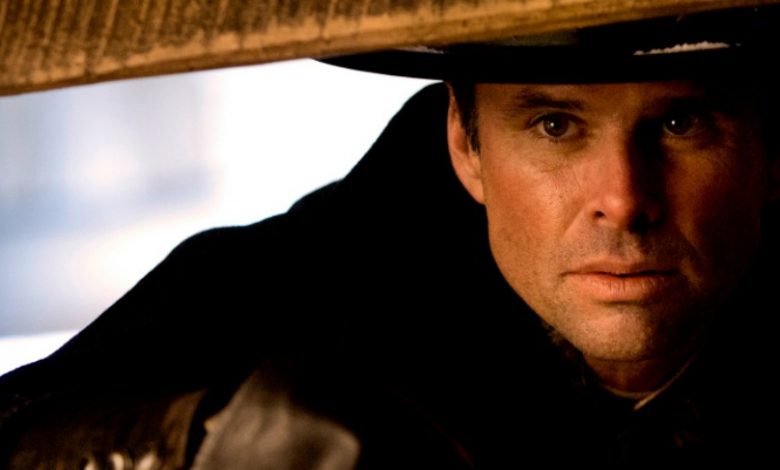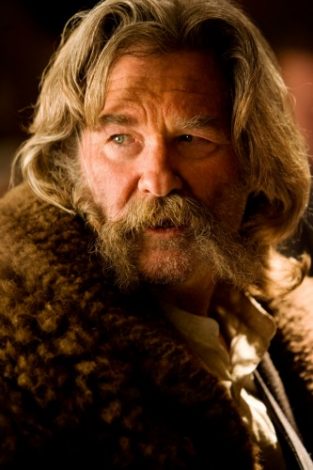
“The Hateful Eight” marks more than the director’s second consecutive western. It confirms his inability to corral his exorbitant talent. Yes, 2012’s “Django Unchained” dazzled until a finale that went on about 20 minutes too long.
With “Eight,” Tarantino once more indulges his primal filmmaking tics without a filter. That turns a brilliant opening sequence into a slog. That pattern repeats over the three-hour running time, one featuring an overture, intermission and 70 mm projection in select theaters.
They share a stagecoach one freezing afternoon en route to Red Rock. That’s where The Hangman will trade in his ornery cargo. She’s a foul-mouthed fugitive named Daisy Domergue (Jennifer Jason Leigh), and she’ll fetch a pretty penny.
They finally arrive at Minnie’s Haberdashery, a place to warm their bones while the storm rages on. But they aren’t alone. They meet a quartet of strangers who may not be exactly who they claim.
ALSO CHECK OUT: Tarantino’s ‘Hateful Eight’ to Shoot in Telluride, Colorado
Tarantino’s “Inglourious Basterds” served as a Jewish revenge fantasy, giving the tale purpose and energy. He used a similar theme with “Django Unchained,” granting the ghosts of black slaves vengeance against their oppressors.

The film is set roughly a decade after the Civil War, and the notion that racial tensions remain red hot makes sense. Yet it consumes so much screen time the bigger story suffers.
And then there’s the “N-word,” Tarantino’s preferred obscenity. Did it come up so often during this era?
Having Daisy greet Jackson’s character with a “howdy, N-word!” is the perfect way to establish the era and its ignorance. That’s never enough here, though.
Tarantino is holding all the cards to his murderous mystery. He even supplies some narration to help us connect the dots. Every new reveal feels more like a screenwriter’s gimmick rather than a revelation.
“Hateful Eight” explores the notion of frontier justice vs. real justice, but it’s tackled directly, briefly, and then shoved aside. The script’s ink-black humor also can’t compete with past Tarantino efforts. A running gag about a door that won’t shut isn’t funny the first time, let alone the third. The one sly joke that connects is how everyone seems to have paperwork to defend their nefarious deeds.
DID YOU KNOW: Legendary composer Ennio Morricone supported himself by playing the trumpet while studying at Rome’s Conservatory of Santa Cecilia during his teen years.
The relatively bloodless first half gives way to a gore-filled finale. Rare has the director’s penchant for violence felt so meaningless, so obligatory. Just because you can make a head explode doesn’t mean it should be shown in glorious 70 mm.
Performances are rock solid as usual, particularly Leigh’s irascible Daisy. She takes the kind of pummeling that will outrage Social Justice Warriors. She still gives as good as she gets. Russell, doing his best John Wayne impression, registers as a force of nature. His performance rarely varies in its tone. It’s all shouts and growls.
The tale, separated by chapter title cards in true Tarantino style, is never far from a crackling moment. Italian composer Ennio Morricone may be in his late 80s, but the maestro of too many great western scores to tally can give us goosebumps at will.
Tarantino’s affection for the western is undeniable, and some character exchanges both honor and update the genre. And his casting instincts remain precise, down to giving Bruce Dern another complex role after his bravura turn in “Nebraska.”
Neither the cast nor Morricone’s masterful score can revive “The Hateful Eight” and its lumbering pace. It’s more proof Tarantino’s passions aren’t enough. The grindhouse auteur needs the discipline of the great directors he rigorously honors to deliver on his past promise.

I personally was blown away by the film. It gave me the same catharsis (in the Aristotlean sense of “emotional purge”) I had when watching “Chinatown”, “Carlitio’s Way”, and “The Passion Of The Christ”. It’s Quentin’s darkest movie, certainly.
As for the violence…to me, it felt more like “Reservoir Dogs” than “Kill Bill”. The blood isn’t cartoony–it’s painful and meant to be.
I saw the film yesterday. It was way too long, and much of the bloviated dialogue had no pay off. This is the first QT movie I don’t think I’ll re watch.
Worst movie I have ever seen, bar none. So glad I didn’t have to pay to see it.
you paid by giving your time
“This is his least substantial film”
You’re some nobody film critic. How can you even try to assert what makes Tarantino substantial. Gain some weight about being anybody before you try anything like that.
Some people have forgotten that it’s no longer cool to put the smack on Tarantino. This critic is obviously one of them.
The characters in Hateful Eight are about as entertaining as any he has created, this critic is probably one of those people that thinks making a stir, makes a nice brew.
Or it could be his honest opinion. Before I watched I would have claimed Tarantino was my favorite director. Afterwards, I now question that notion. That is how bad I thought it was.
All film is subjective, mate. It’s his job to give an honest critique. We may disagree. But we’ve disagreed with Pauline Kael and ROGER EBERT, too.
This reviewer is dead inside. Hateful Eight is a wonder to behold.
You’re kidding, right?
You’re obviously more at home watching masterpieces such as ‘White Chicks’ and ‘Fifty first dates’. A dialogue rich movie is nor for everyone, I agree.